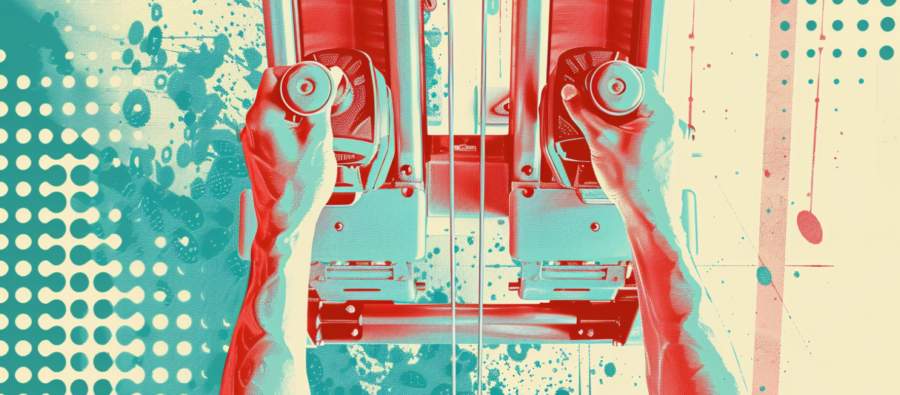That’s where the humble video clip steps in—not as a vanity tool, but as a quiet, relentless truth-teller. And for trainers, coaches, or gym owners trying to scale feedback without cloning themselves, it’s an absolute gift.
A Mirror That Doesn’t Lie (Even When You Wish It Would)
Most clients don’t have the kinesthetic awareness they think they do. They’re convinced their back is flat, their knees are tracking perfectly, and their shoulders aren’t migrating north during every rep. A 5-second clip can dismantle those illusions in a heartbeat.By encouraging clients to self-record and tag their clips to specific exercises, coaches create a visual paper trail. It’s not about producing highlight reels—it’s about slow-motion honesty. These short bursts of footage can reveal chronic compensation patterns, hint at imbalances, or flag fatigue-induced sloppiness that sneaks in halfway through a set.
How to Keep It Low-Tech and Still Useful
This doesn’t need to become Spielberg’s gym era. No gimbals. No lighting rigs. Just a smartphone propped against a dumbbell or a wall. You’re not making art—you’re auditing movement.Most modern phones record at high enough resolution and frame rate to make movement cues obvious. All that’s needed is a short list of best practices:
- Set the phone at a consistent angle—ideally side or ¾ view for compound lifts
- Record only one or two reps, preferably middle-of-set, to show true fatigue behavior
- Keep the background clear—no interpretive dance guy, please
Scaling Feedback Without Diluting Quality
In-person feedback is gold—but it doesn’t scale. Coaches max out quickly, and online clients can’t always afford a Zoom session for every set of squats. Form clips offer a low-effort, high-return middle ground.Trainers can batch-review client footage weekly, offering timestamped notes or overlay voice feedback. Some even use screen recording to sketch on top of clips like a sports commentator—turning “chest up” from an abstract cue into a visual correction.
It’s not just more efficient—it’s often more effective. Clients see themselves doing the thing wrong, and the lightbulb moment lands harder than any cue shouted mid-rep.
Client Buy-In: Getting Over the Awkward Phase
Let’s be honest: no one loves watching themselves lift—at least not in the beginning. The angle’s weird. Their face looks like it’s passing a kidney stone. It’s vulnerable.But the discomfort fades fast when they realize it’s a shortcut to better results and fewer injuries. Coaches can ease the process by leading with transparency: “You don’t have to post it. You don’t have to show anyone but me. But it’s the fastest way to fix this.”
What helps even more? Normalizing it. If a coach says, “All my clients do this,” it becomes routine, not cringe. And if you’ve ever shown a lifter the side-view of their rounded back under load, you know—nothing makes posture corrections stick quite like mild horror.
From Risk Management to Performance Edge
Most lifters think of form checks as damage control—fix the movement before something snaps. And yes, video helps you dodge the chiropractor. But it’s also a performance tool. Small tweaks in technique can unlock big jumps in efficiency, stability, and power output.For example, noticing that a client’s front squat turns into a weird hybrid goblet press by rep four? That might lead to programming lighter pause squats or thoracic mobility work—preventing that collapse before it eats into progress. Video doesn’t just fix problems; it finds them early.
The win for coaches? You’re no longer reacting to injuries—you’re engineering resilience. That’s the kind of oversight that turns decent programs into elite ones.
Integrating Video Into the Coaching Flow
The key to making this work at scale is building it into the weekly rhythm. Ask clients to upload one or two clips per week, ideally from their toughest or most technical lifts. Don’t turn it into homework hell. Keep expectations tight and predictable.A simple workflow could look like this:
- Clients record and tag short clips with lift name, date, and RPE
- Clips go into a shared folder or platform, no fancy apps required
- Coach reviews and gives 2–3 specific notes, voice or text
Why Gym Owners Should Be Paying Attention
If you run a gym or coaching business, encouraging client video can actually boost retention. People who feel coached—even asynchronously—stick around longer. They trust the process more when it’s visual. They also feel seen, even when training solo.Plus, those clips can (with permission) become anonymized teaching tools. Imagine a library of real client form breakdowns and corrections—not just for the person in the video, but for onboarding new staff, training junior coaches, or building online resources. It’s scalable knowledge—captured casually.
And while this isn’t about marketing, let’s not ignore reality: clients love sharing wins. When someone nails their first legit pull-up or PRs with immaculate form, that clip finds its way online. Your coaching gets visibility without ever running an ad.
Lights, Camera, Activation
We’re long past the era where filming yourself in the gym made you “that guy.” These days, if you’re not occasionally reviewing your own clips, you’re leaving progress and safety on the table.For coaches and gym owners, video is a practical, scalable tool—not a gimmick. It builds trust, accelerates correction, and frees you from the constant in-person grind. And for clients, it’s an eye-opening way to actually *see* their growth (and their mid-squat eyebrow game, for better or worse).
No production budget required. Just a phone, a rep, and a willingness to hit record—awkward faces and all.
Article kindly provided by gymlogtrack.com

